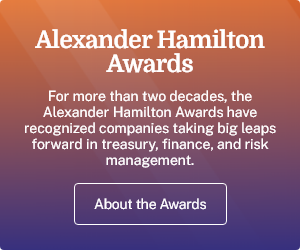Tier 1 issuers accept a deeper discount to access the Fed facility; as of last week, the funding facility was accepting paper at a discount rate of 1.21%, while Tier 1 nonfinancial paper in the regular market was going at a discount of 21 bps and Tier 1 financial paper at 51 bps. But the funding facility's pricing looks attractive to Tier 2 issuers; AFP calculates that Tier 2 companies are paying 2.12% more to issue 90-day paper than Tier 1 companies.
If Tier 2 companies, such as FedEx, Kraft and Safeway, can access the commercial paper market, that takes some pressure off banks, says Kalish. “Every dollar they can't fund themselves in the commercial paper market, they're turning around and funding with their banks,” he says. “That's one more dollar banks don't have to lend elsewhere.”
Still, the commercial paper market is showing some signs of life. Outstandings totaled $1.48 trillion in March, still well off the market's 2007 peak of $2.2 trillion. But the CPFF's holdings are off almost a third from the peak of $349.9 billion in late January, suggesting more issuers are able to stand on their own. In the final week of March, the facility held $240.8 billion, or about 16% of the total paper outstanding.
Diane Vazza, head of global fixed-income research at Standard & Poor's, notes that it's normal for issuance of commercial paper to decline when the economy dips. “During a recession, companies that finance their short-term needs, like inventory, with commercial paper are carrying less,” she says. “They don't have the same business needs to draw down so much on their commercial paper.”
Vazza says the fall-off in commercial paper also reflects investment-grade companies' moves in recent months to refinance short-term borrowings by issuing longer-term bonds as bond market conditions improve. Credit spreads have been narrowing, she notes, with S&P's investment-grade index now at 446 bps over treasuries, down from 531 at the beginning of the year. “It has been very attractive for companies to come to the bond market and so a number of investment-grade companies termed out their short-term debt into the bond market and were able to do that at attractive rates and extend maturities,” she says, noting that such a move allows companies to eliminate rollover risk. Financial companies have been able to access the bond market at particularly attractive rates thanks to a Federal Deposit Insurance Corp. guarantee program, Kalish adds.
It's not clear how the market would be faring without the support from the Fed, says Kalish. The funding facility's holdings have hovered between $240 billion and $250 billion for the last couple of months. “It looks as if there's a constant $250 billion out there that people are just comfortable having with the government, even though there's a bit of a premium to have it there,” Kalish says. “The question we can't really answer is what happens if we get to Oct. 30 and [the funding facility] is not extended. Are people going to be comfortable buying commercial paper without the government stepping in?”
© 2025 ALM Global, LLC, All Rights Reserved. Request academic re-use from www.copyright.com. All other uses, submit a request to [email protected]. For more information visit Asset & Logo Licensing.

